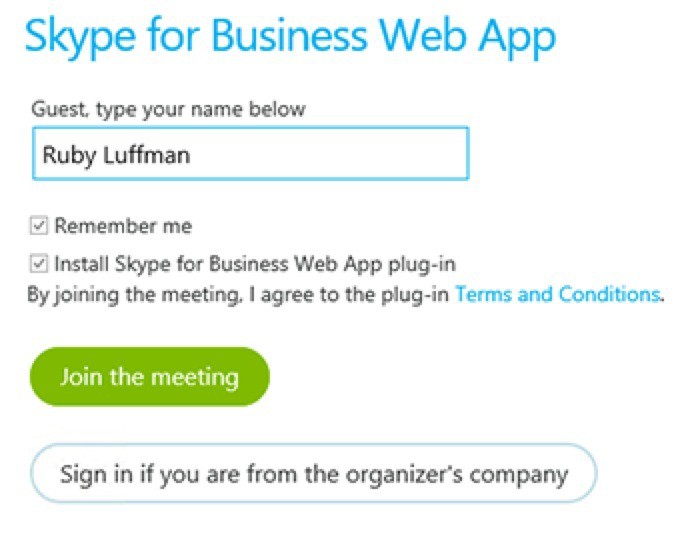

Either way, if you know a couple of things that I am going to share, you can get the external user from a non-federated domain connected to your meeting fairly easily. In some cases the individual on the other end (the external user) may not have Skype for Business installed and they are unclear as to which client they should install.
#Skype for business web url full#
When the Skype for Business client is installed on a computer it will automatically attempt to join using the full Skype for Business client, rather than Skype for Business Web App. This is due to the fact that they are part of a non-federated domain and are trying to join a meeting in your domain as an authenticated user. Things can especially get confusing for people who are trying to join your meeting and have a version of Skype for Business installed but they are not part of your company.

If you want to know more about different Skype for Business clients, check out my article The Many Versions of Skype for Business. There are multiple versions of Skype and there are just too many possible scenarios where users may have issues joining a meeting. I won’t list all the possible scenarios in this article that may cause problems, instead I will focus on the solution for a common scenario.

Depending on various factors, external users may have problems joining the Skype for Business meeting, or they may not have a Skype for Business client installed on their computer. You can also use Skype for Business to communicate with external users that are not part of your company’s network. There are several advantages for using Skype for Business for instant messaging, video conferencing, audio conferencing, and screen sharing with other team members within your organization.


 0 kommentar(er)
0 kommentar(er)
